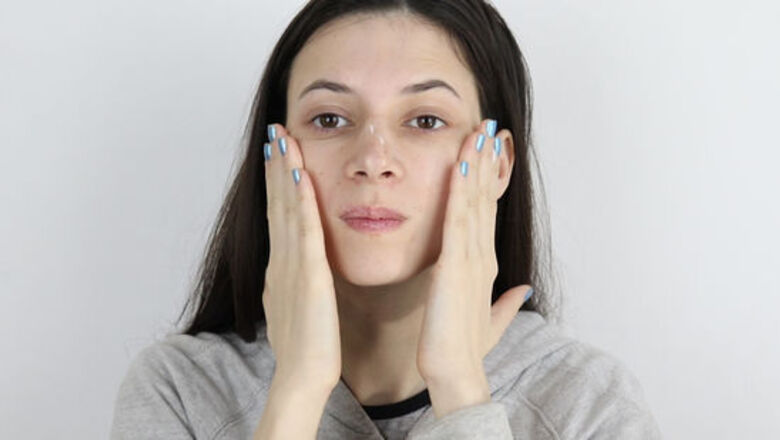
views
X
Research source
It’s supposed to feel lightweight and airy on the skin, yet still produce a matte finish. It’s a great option for those with dry or more mature skin.[2]
X
Research source
Fortunately, mousse foundation is not difficult to apply, allowing you to easily achieve a clean, matte look that helps you feel ready for the day.
Prepping Your Skin
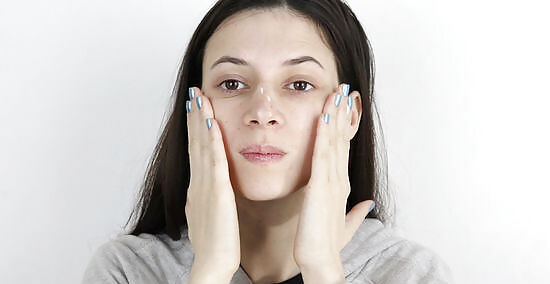
Wash your face. Find a cleanser that’s right for your skin and use circular motions to work it into your skin with your fingertips. Start this at the bottom of your face, and work your way up. Dry your skin with a clean washcloth or paper towel. It’s important to know your skin type and pick a cleanser that matches it. If you don’t, you could end up with a cleanser that is either too stripping (which will dry out your skin) or too rich (which will clog your pores)!
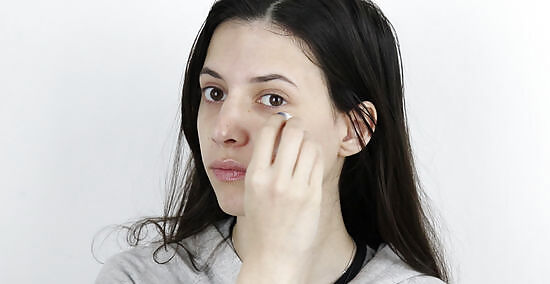
Apply facial toner using a cotton ball. Toner can help reduce the amount of oil on your skin and make it easier for your foundation to spread evenly on your face. Soak a cotton ball in toner (by holding it against the mouth of the toner container and quickly flipping it upside-down) and then gently rub the cotton ball over the surface of your skin. Apply more toner in your T-zone — the area across your forehead and vertically down your nose and chin. This is where your face tends to be more oily. Always remember to apply toner first. This follows a the general “light-to-heavy” rule of applying cosmetics — lighter products first, and then thicker products after. Remember to pick a toner that’s right for your skin.
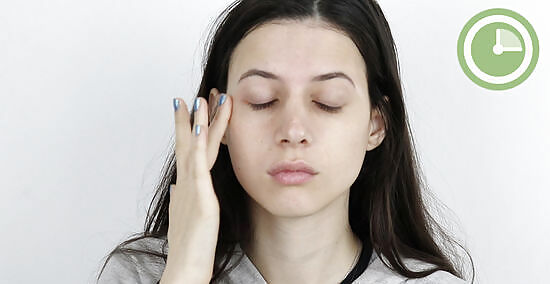
Rub moisturizer on your face. Right after you’ve applied your toner, dab small dollops of moisturizer all over your face and neck and blend it in. This should create an even layer of moisturizer. Then, wait 5 minutes for your skin to absorb it. Try not to use too much product, because you don’t want to be wasteful or clog up your pores.

Follow with primer if you want your makeup to last for a long time. If you need your makeup to stay intact through a particularly long day and into the night, primer is the way to go. Primer can also help to make lines and pores less noticeable. Start by applying it to the middle of your face with your fingertips and blend it outward. Water-based primers are recommended for people with acne-prone or oily skin. EXPERT TIP Katya Gudaeva Katya Gudaeva Professional Makeup Artist Katya Gudaeva is a Professional Makeup Artist and the Founder of Bridal Beauty Agency based in Seattle, Washington. She has worked in the beauty industry for over 10 years and worked with companies such as Patagonia, Tommy Bahama, and Barneys New York and with clients such as Amy Schumer, Macklemore, and Train. Katya Gudaeva Katya Gudaeva Professional Makeup Artist Primer can also smooth out uneven skin. According to professional makeup artist Katya Gudaeva: "If you have enlarged pores or uneven skin texture, the primer smooths the surface before you put on your foundation. It also makes your foundation last longer, and it can help block oil if you have oily skin."
Putting On the Foundation
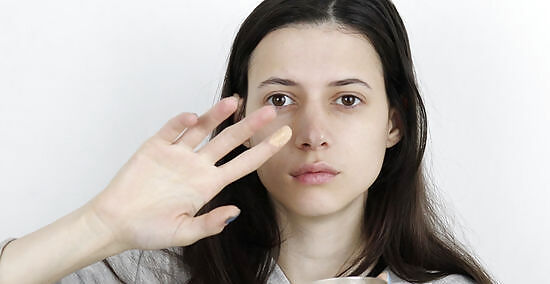
Dip your finger in the foundation. Take your index finger and dip it into the product. You should have just enough to lightly coat the pad of your finger.
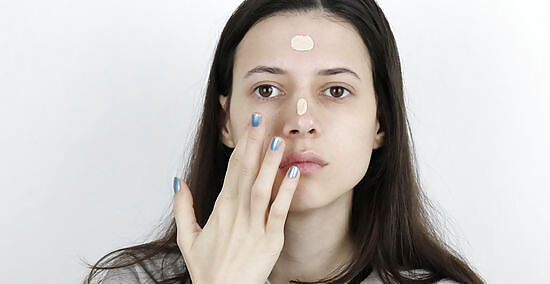
Dab the product lightly on your face. Focus on applying it on your forehead, nose, cheekbones, and chin, as this is where it is easier for oil to accumulate. You’ll likely need to dip your finger in the product again — this is completely fine. Just be careful not to use too much. Mousse foundations tend to come in smaller containers because you don’t need to use as you might use when applying a liquid foundation.

Blend in the product using your fingers or a foundation brush. Start blending in the center of your face, and work outwards. Work in light, short, downward strokes. Inspect your skin for uneven patches and blend those out. The foundation should feel pretty lightweight and airy on your skin. The brush is a much quicker method of blending than using your fingers, but the warmth of your fingers can help give the foundation a more natural blend. There are advantages to both methods. Mousse foundation should provide light to medium coverage. It won’t quite make all of your blemishes disappear, but it’ll definitely even out your skin-tone for a more matte look. Don’t dip the brush directly into the foundation. Because mousse is of a thicker texture, it will not adhere to the brush in the same way that a liquid foundation would. You may find yourself in a similar dilemma if you try to use a foam beauty blender.
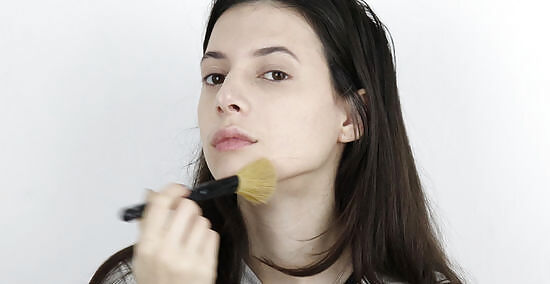
Apply concealer and setting powder to finish the look. Using a smaller brush, blend a concealer of your choice over any blemishes or scars that you want extra coverage on. Then, use a larger powder brush to gently press a powder into your skin. This will set your foundation and help keep it on longer, instead of rubbing off during the day.

















Comments
0 comment